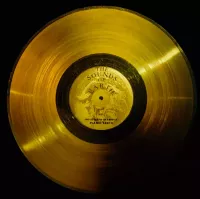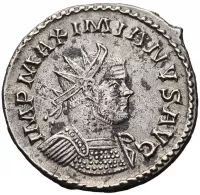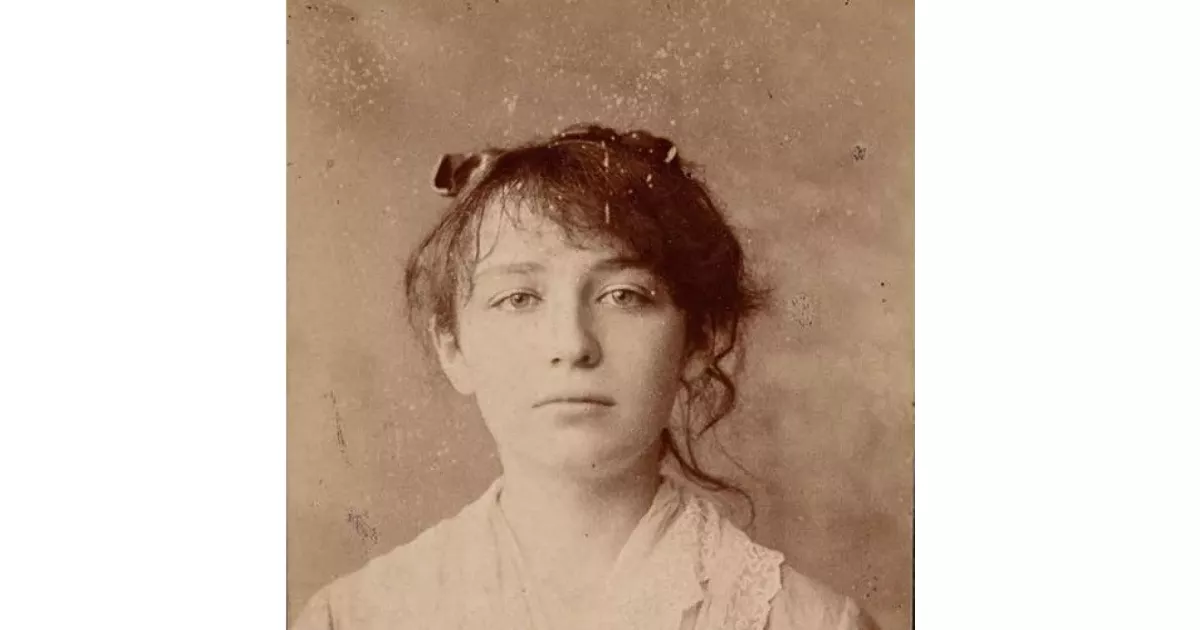Camille Claudel (1864-1943) was a French sculptor celebrated for her expressive figurative sculptures in bronze and marble. Despite facing societal barriers and personal struggles, including a tumultuous relationship with Auguste Rodin, Claudel produced significant works like "The Waltz" and "The Mature Age." She was eventually confined to a mental institution, where she spent the last thirty years of her life. Although she died in relative obscurity, Claudel's artistic talent was posthumously recognized, establishing her as a prominent figure in the history of sculpture.
1900: Creation of The Mature Age
In 1900, Claudel created The Mature Age, often seen as an allegory of life's three stages: Maturity drawn to Old Age/Death, with Youth trying to save him. Her brother viewed it as symbolizing her split from Rodin.
1902: Completion of Perseus and the Gorgon
In 1902, Claudel completed a large sculpture of Perseus and the Gorgon.
1903: Exhibitions at Salons
Beginning in 1903, Camille Claudel began exhibiting her works at the Salon des Artistes français or at the Salon d'Automne.
1905: Mental Health Decline
After 1905, Claudel showed signs of mental illness, including destroying statues, disappearing, paranoia, and a diagnosis of schizophrenia. She accused Rodin of stealing her ideas and plotting to kill her.
1905: Creation of La Valse
In 1905, Claudel created a second edition of La Valse.
1905: Casting of The Implorer
Modeled in 1898 and cast in 1905, The Implorer was cast in Paris by Eugene Blot. The figure has been interpreted not as purely autobiographical but as an even more powerful representation of change and purpose in the human condition.
1906: Seclusion After Brother's Wedding
Following her brother's wedding in 1906 and his return to China, Claudel lived secluded in her workshop.
March 1913: Admission to Psychiatric Hospital
Following the death of her father, Camille Claudel was admitted to the psychiatric hospital of Ville-Évrard in Neuilly-sur-Marne on March 10, 1913, at the request of her younger brother Paul.
1913: First visit from her brother Paul after confinement
In 1913, Paul Claudel visited his confined older sister for the first time after she was admitted to the psychiatric hospital.
September 1914: Transfer to Montdevergues Asylum
On September 7, 1914, to be safe from advancing German troops, Camille Claudel was transferred with other patients from Ville-Évrard, first to Enghien, and then to the Montdevergues Asylum near Avignon. Her admittance certificate, signed on September 22, 1914, cited "systematic persecution delirium".
1915: Setting of Camille Claudel 1915
The film Camille Claudel 1915 is set in 1915.
June 1920: Recommendation for reintegration into family environment
On June 1, 1920, Dr. Brunet sent a letter advising Camille Claudel's mother to try to reintegrate her daughter into the family environment, but nothing came of it.
1925: Visit from her brother Paul
In 1925, Paul Claudel visited his confined older sister.
1927: Visit from her brother Paul
In 1927, Paul Claudel visited his confined older sister.
June 1929: Death of Camille Claudel's mother
Camille Claudel's mother died in June 1929, without ever having visited her daughter during her confinement.
1929: Jessie Lipscomb visits Camille Claudel
In 1929, sculptor and Claudel's former friend Jessie Lipscomb visited her, and afterwards insisted "it was not true" that Claudel was insane.
1930: Rodin sculpture L'éternelle Idole
In 1930, Rodin's sculpture, L'éternelle Idole, had a high estimate of $75,000.
1933: Visit from her brother Paul
In 1933, Paul Claudel visited his confined older sister.
1936: Visit from her brother Paul
In 1936, Paul Claudel visited his confined older sister.
October 1943: Camille Claudel's Death
Camille Claudel died on October 19, 1943, after spending 30 years in the Montfavet asylum. Her brother Paul was informed of her terminal illness and visited her, but was not present at her death or funeral.
October 1943: Death of Camille Claudel
Camille Claudel, a French sculptor known for her figurative works in bronze and marble, died in October 1943. Despite dying in relative obscurity, she later gained recognition for her originality and the quality of her work. She is the subject of several biographies and films, and is well known for sculptures including The Waltz and The Mature Age.
1943: Imagined End of Claudel's Life in These Good Hands
Carol Bruneau's 2015 novel, These Good Hands, portrays the imagined end of Camille Claudel's life in 1943, focusing on her relationship with her caregiving nurse.
1943: Visit from her brother Paul and his last visit
In 1943, Paul Claudel visited his confined older sister. This was the last time Paul visited her.
1951: Exhibition at the Musée Rodin
In 1951, Paul Claudel organized an exhibition at the Musée Rodin, which continues to display her sculptures.
1982: Publication of Une femme by Anne Delbée
In 1982, the publication of the fictionalized biography Une femme, by author Anne Delbée, sparked a resurgence of interest in Camille Claudel's work.
1984: Large Exhibition of Works
In 1984, a large exhibition of Camille Claudel's works was organized.
1988: Release of film Camille Claudel
In 1988, the film Camille Claudel, a dramatization of her life directed by Bruno Nuytten and starring Isabelle Adjani and Gérard Depardieu, was released.
1989: Camille Claudel Nominated for Academy Awards
In 1989, the film Camille Claudel received two Academy Award nominations.
1998: Creation of Le Dieu Envolé
In 1998, Claudel created Le Dieu Envolé.
1998: Composition of Death of a Little Girl with Doves
In 1998, composer Jeremy Beck created Death of a Little Girl with Doves, an operatic soliloquy inspired by Camille Claudel's life and letters.
2000: Premiere of S.P. Miskowski's La Valse
In 2000, the Seattle playwright S.P. Miskowski's La Valse premiered, a well-researched look at Claudel's life.
2002: Details of Camille Claudel's Burial Revealed in Book
According to the 2002 book, Camille Claudel, A Life, after ten years, Camille's remains were moved to a communal grave at the asylum, mixed with the bones of the most destitute.
2003: Production of Camille Claudel Musical
In 2003, Frank Wildhorn and Nan Knighton's musical Camille Claudel was produced by Goodspeed Musicals at The Norma Terris Theatre in Chester, Connecticut.
2003: Plans for Claudel Museum Announced
In 2003, plans to transform the Claudel family home in Nogent-sur-Seine into a museum were announced. The museum negotiated with the Claudel family to acquire Camille's works, including 70 pieces and a bust of Rodin.
2005: Auction Sale of La Valse
In 2005, Sotheby's sold a second edition of La Valse (1905, Blot, number 21) for $932,500.
2008: Retrospective Exhibition at Musée Rodin
In 2008, the Musée Rodin organized a retrospective exhibition including more than 80 of her works.
2009: Paris Auction of Le Dieu Envolé
In 2009, at a Paris auction, Claudel's Le Dieu Envolé (1894/1998, foundry Valsuani, signed and numbered 6/8) had a high estimate of $180,000.
2011: Premiere of Boris Eifman's Rodin Ballet
In 2011, Boris Eifman's new ballet Rodin premiered in St Petersburg, Russia, dedicated to Auguste Rodin and Camille Claudel's life and work.
2012: World Premiere of Camille Claudel Play
In 2012, the world premiere of the play Camille Claudel, written, performed and directed by Gaël Le Cornec, took place at the Pleasance Courtyard Edinburgh Festival, exploring the master-muse relationship from Camille's perspective.
2013: Premiere of Camille Claudel 1915
In 2013, the film Camille Claudel 1915, directed by Bruno Dumont and starring Juliette Binoche, premiered at the 63rd Berlin International Film Festival.
2014: Premiere of Claudel in Columbus
In 2014, the Columbus Dance Theatre and the Carpe Diem String Quartet performed the premiere of Claudel in Columbus, Ohio.
2015: Publication of These Good Hands
A 2015 novel by Carol Bruneau, These Good Hands, imagines the end of Camille Claudel's life in 1943, through the relationship with her caregiving nurse.
2017: Opening of the Camille Claudel Museum
In 2017, The national Camille Claudel Museum in Nogent-sur-Seine opened. Claudel was a longtime associate of sculptor Auguste Rodin, and the Musée Rodin in Paris has a room dedicated to her works.
2017: Release of Rodin film
In 2017, the film Rodin, co-starring Izïa Higelin as Claudel, was released.
2017: Opening of the Musée Camille Claudel
In March 2017, the Musée Camille Claudel, a French national museum dedicated to Claudel's work, opened in her teenage home town of Nogent-sur-Seine. The museum displays approximately half of her 90 surviving works.
2021: Premiere of Meryl Tankard's Claudel Ballet
In 2021, Australian choreographer Meryl Tankard choreographed Claudel for the Sydney Opera House, based on Claudel's life and her relationship with Rodin, written and directed by Wendy Beckett.
2023: Major Retrospective Co-organized by Art Institute of Chicago and J. Paul Getty Museum
In 2023, The Art Institute of Chicago and the J. Paul Getty Museum co-organized a major retrospective of her work, featuring 60 sculptures from more than 30 institutional and private lenders. The show gathered many of her key compositions in terracotta, plaster, bronze, and stone.
Mentioned in this timeline
China officially the People's Republic of China PRC is an...
Connecticut is a state in the New England region of...

Chicago is the most populous city in Illinois and the...
Canada is a North American country the second largest in...

Music is a cultural universal involving the arrangement of sound...

Books are a means of storing information as text or...
Trending

7 months ago PJ Haggerty Transfers to Kansas State, Withdraws from 2025 NBA Draft.

Ryan O'Hearn is a professional baseball first baseman currently playing for the Baltimore Orioles in MLB Previously he played for...

5 months ago Ben Simmons' NBA Future Uncertain: Unsigned, Celtics Rumors, and Four Team Interest

USA Basketball USAB is the governing body for basketball in the United States and represents the country in FIBA It...

6 months ago Kash Patel, FBI Director, entangled in 2020 election conspiracy probe.

5 months ago Student Loan Repayment Troubles: 460K Denied, Backlog Alarms, Forgiveness Halted.
Popular

Tucker Carlson is an American conservative political commentator known for...

Candace Owens is an American conservative political commentator and author...

XXXTentacion born Jahseh Dwayne Ricardo Onfroy was a controversial yet...

Ben Shapiro is a prominent American conservative political commentator media...

William Franklin Graham III commonly known as Franklin Graham is...

John F Kennedy JFK was the th U S President...

